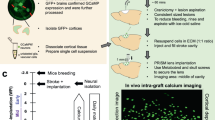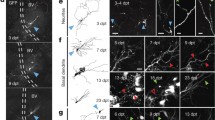Abstract
Traditionally, research in neuropsychology has taken the following two directions: (1) removal of a neural structure by surgical means of ablation or electrolytic lesion and study of the concomitant deficit or loss of function, and (2) stimulation of a neural structure to study the immediately following response. These two approaches, being complementary in nature, have provided great insight into the problems of sturcture/function of the brain. In recent years, research on neural transplantation initiated by Das and his associates (Das 1975, Das and Hallas 1978) seems to offer new ways of approaching research in neuropsychology. Potentially, there are at least two different directions of research that may be pursued. First, removal of or chemical change to a neural structure in the host animal to induce functional abnormality or deficit, followed by transplantation of neural tissue to study recovery from the abnormal or deficient function. Second, transplantation of neural tissue with a high growth potential in order to replace a large volume of a specific region of the host brain by the transplant, followed by the study of the behavior of these animals, and this in turn, followed by the ablation of the transplant to study the loss or deficit in the function. The first approach has been used by Bjorklund and Stenevi (1979). But the second approach has been less widely employed other than for work in our laboratories (Wallace and Das 1982). This approach has a potential of exploring problems of “functional compensation” and “functional plasticity” of neural tissues. It can be best investigated if heterotopic conditions of transplantation are employed (e.g., transplantation of embryonic neocortical tissue into the cerebella of host animals). Such transplants are intraparenchymal and are completely integrated with the host brain, and there are no pathological reactions in the transplant or the host brain even after 2 or more years following transplantation.
Access this chapter
Tax calculation will be finalised at checkout
Purchases are for personal use only
Preview
Unable to display preview. Download preview PDF.
Similar content being viewed by others
References
Björklund, A., Stenevi, U. (1979). Reconstruction of brain circuitries by neutral transplants. TrenDs Neurosci. 301.
Bures, J., Burresova, O., Huston, J., Jr. (1976). Techniques and Basic Experiments for the Study of Brain and behavior. Amsterdam: Elsevier Scientific Publishing Co.
Das, G. D. (1974). Transplantation of embryonic neural tissue in the mammalian brain. I. Growth and Differentiation of neuroblasts from various regions of the embryonic brain in the cerebellum of neonate rats. TIT J. Life Sci. 4, 93.
Das, G. D. (1975). Differentiation of DenDrites in the transplanteD neuroblasts in the mammalian brain. In: Advances in NeuroloGy. Vol. 12. KrentzberG, G. W. (ed.). New York: Raven Press, pp. 181–199.
Das, G. D. (1982). Extraparenchymal neural transplants: Their cytology and survivability. Brain Res. 241, 182–186.
Das, G. D., Hallas, B. H. (1978). Transplantation of brain tissue in the brain of adult rats. Experientia 34, 1304.
Das, G. D., Hallas, B. H., Das, K. G. (1979). Transplantation of neural tissues in the brains of laboratory mammals: Technical Details and comments. Experientia 35, 143.
Das, G. D., Ross, D. T. (1982). Stereotatic technique for transplantation of neural tissues in the brain of adult rats. Experientia 38, 848–851.
Gibson, J. J, Walk, R. D. (1960). The Visual Cliff. Sci. Am. 202, 64–71.
Horel, J. F. (1968). Effects of subcortical lesions on brightness Discrimination acquired by rats without visual cortex. J. Comp. Physiol. Psychol. 65, 103.
King, F. A. (1958). Effects of septal and amyglaoid lesions on emotional behavior and conditional avoidance responses in the rat. J. Neuro, and Mental Disease 126, 57–63.
Lacey, D. L. (1944). A revised procedure for the calibration of the activity wheel. Am. J. Psychol. 57, 411.
Legg, D. R., Cowly, A. (1977). The role of the ventral lateral Geniculate nucleus and posterior thalamus in intensity Discrimination in rats. Brain Res. 123, 261.
Oblinger, M. M., Hallas, B. H., Das, G. D. (1980). Neocortical transplants in the cerebellum of the rat: Their afferents and efferents. Brain Res. 189, 228–232.
Stein, D. G., Rosen, J. J., Butters, N. (eds.). (1974). Plasticity and Recovery of Function in the Central Nervous System. New York: Academic Press.
Stenevi, R., Björklund, A., Svendgaard, N. A. (1976). Transplantation of central and peripheral monoamine neurons to the adult rat brain: Techniques and conditions for survival. Brain Res. 114, 1.
Tupper, D. E., Wallace, R. B. (1980). Utility of the neurological examination in rats. Acta Neurobiol. Exp. 40, No. 6, 999–1003.
Wallace, R. B., Altman, J. (1970a). Behavioral effects of neonatal irradiation of the cerebellum I: Quantitative observations in infant and adolescent rats. Dev. Psychobiol. 2(4), 257.
Wallace, R. B., Altman, J. (1970b). Behavioral effects of neonatal irradiation of the cerebellum II. Quantitative studies in young-adult and adult rats. Dev. Psychobiol. 2(4), 266.
Wallace, R. B., Das, G. D. (1982). Behavioral effects of CNS transplants in the rat. Brain Res. 243, 133.
Wallace, R. B., Das, G., Bell, J., Maheux, D. (1978). Some behavioral consequences of neural transplants in the rat brain. Neurosci. Abst. IV.
Author information
Authors and Affiliations
Editor information
Editors and Affiliations
Rights and permissions
Copyright information
© 1983 Springer-Verlag New York Inc.
About this paper
Cite this paper
Wallace, R.B. (1983). Behavioral Analysis of the Transplantation Phenomenon within a Motor and Sensory System. In: Wallace, R.B., Das, G.D. (eds) Neural Tissue Transplantation Research. Proceedings in Life Sciences. Springer, New York, NY. https://doi.org/10.1007/978-1-4612-5539-0_8
Download citation
DOI: https://doi.org/10.1007/978-1-4612-5539-0_8
Publisher Name: Springer, New York, NY
Print ISBN: 978-1-4612-5541-3
Online ISBN: 978-1-4612-5539-0
eBook Packages: Springer Book Archive




